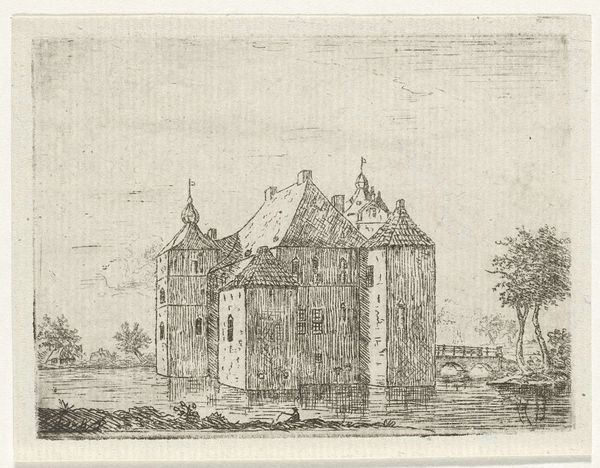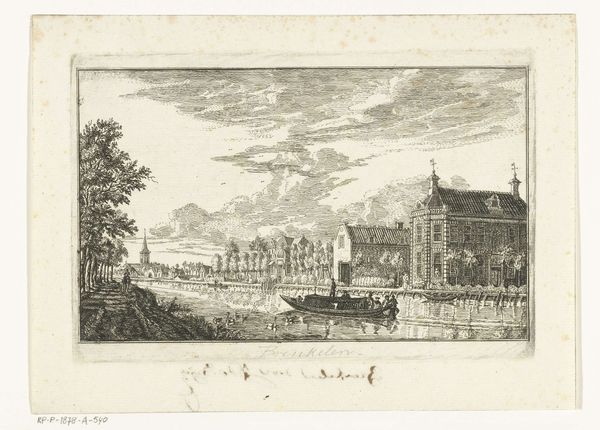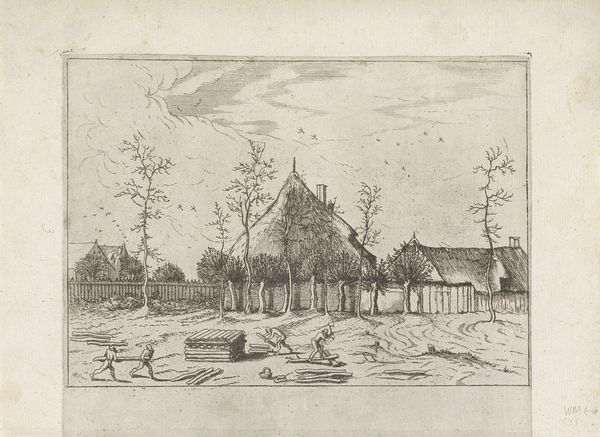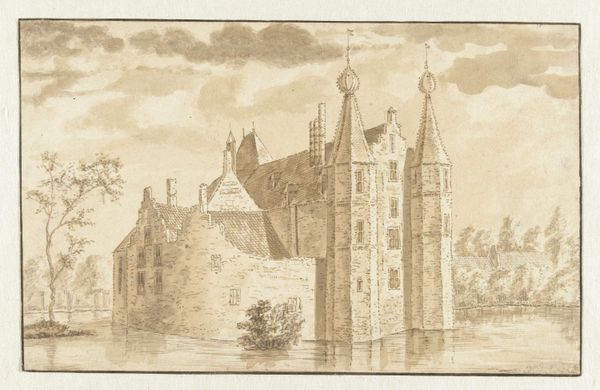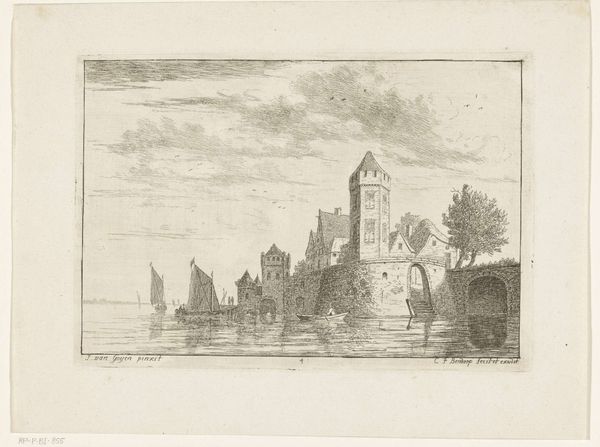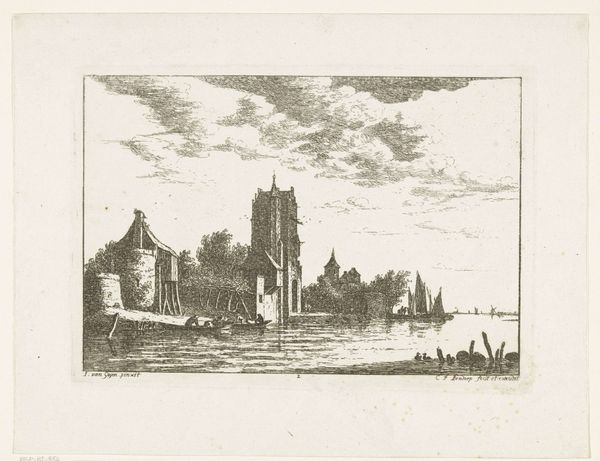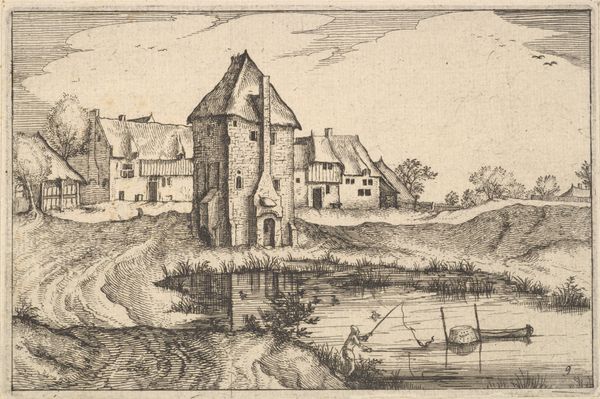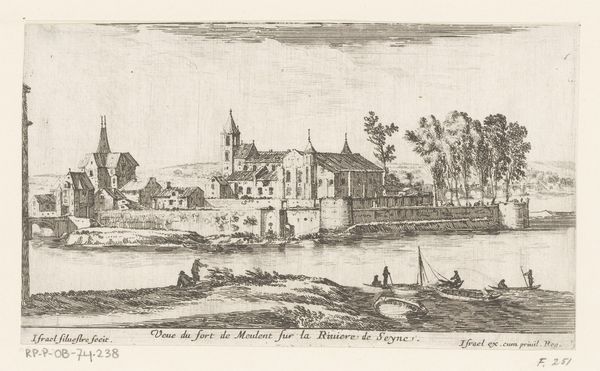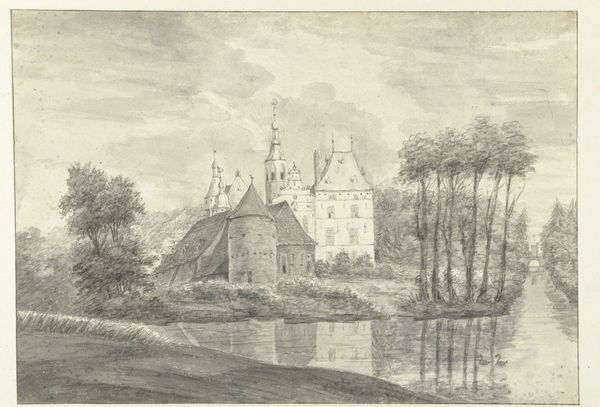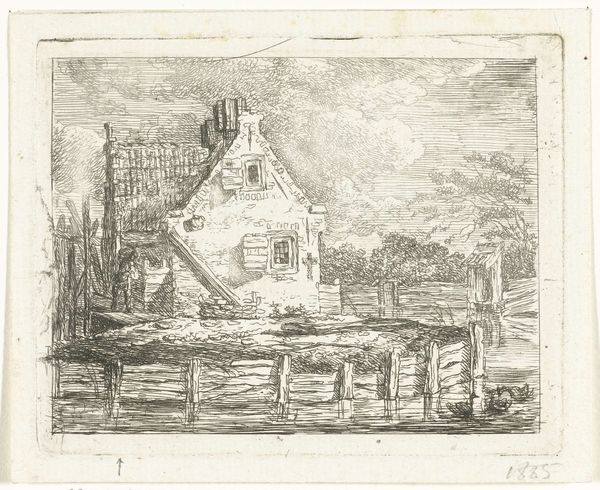
print, etching
# print
#
etching
#
landscape
#
etching
#
romanticism
#
realism
Dimensions: height 79 mm, width 102 mm
Copyright: Rijks Museum: Open Domain
Reinierus Albertus Ludovicus baron van Isendoorn à Blois created this etching of Kasteel de Cannenburch in 1827. At its heart, we see the castle as a symbol of power, safety, and permanence, reflecting humanity’s deep-seated need for shelter and fortification. Castles dot landscapes throughout time and space, from medieval Europe to feudal Japan, each representing dominion and protection. However, the castle's reflection in the water suggests more than meets the eye. The building becomes more dream-like, invoking the subconscious, where deep fears and desires mingle. The castle, so solid and real, blurs at its foundations, representing a disconnect between consciousness and the subconscious. The castle remains rooted in our collective memory, changing with the passage of time. Whether as a haven or a prison, a symbol of aspiration or subjugation, its meaning is never fixed, revealing the complex interplay between our shared history and our innermost selves.
Comments
No comments
Be the first to comment and join the conversation on the ultimate creative platform.

